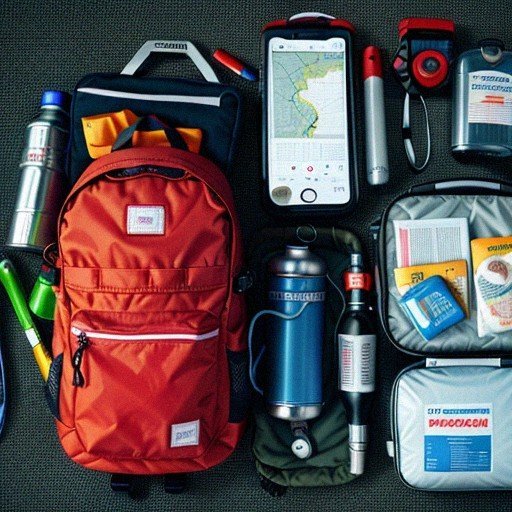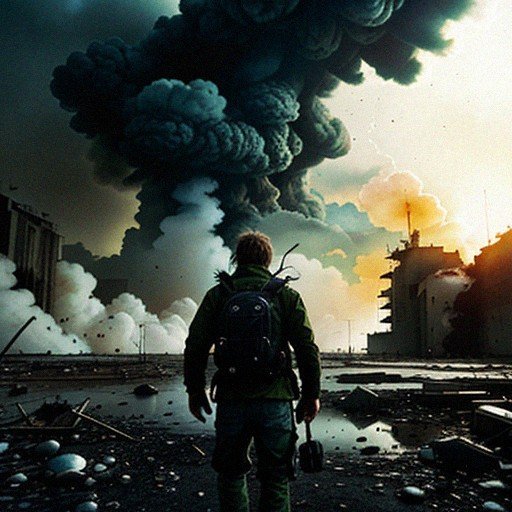Emergency Survival Kit: Understanding Its Purpose and Contents
Emergency situations can happen at any time and anywhere. Whether it’s a natural disaster, a sudden power outage, or a medical emergency, it’s essential to be prepared. One of the most important things you can do to prepare for an emergency is to create an emergency survival kit. In this article, we will describe what an emergency survival kit is for and what essential components you should include in your kit to ensure your safety during an emergency.
Understanding Emergency Survival Kits is crucial in preparing for unexpected situations. An emergency survival kit is a collection of supplies that you may need in case of an emergency or disaster. It should contain enough supplies to help you survive on your own for at least three days. The kit should be easy to carry and should be stored in a location that is easily accessible in case you need to evacuate your home.
Essential Components of an Emergency Survival Kit include food, water, first aid supplies, medication, and other essential items. The type of supplies you need to include in your kit will depend on your specific needs and the type of emergency you are preparing for. In the next section, we will discuss in detail the essential components of an emergency survival kit to help you prepare for an emergency.
Key Takeaways
- An emergency survival kit is a collection of supplies that you may need in case of an emergency or disaster.
- Essential Components of an Emergency Survival Kit include food, water, first aid supplies, medication, and other essential items.
- It is important to prepare an emergency survival kit to ensure your safety during an emergency.
Understanding Emergency Survival Kits
As we all know, emergencies can happen anytime and anywhere. It is important to be prepared for any situation, and that includes having an emergency survival kit. An emergency survival kit is a collection of essential items and supplies that can help you survive during a crisis.
The purpose of an emergency survival kit is to provide you with the basic necessities that you may need during an emergency situation. These kits can be used in a variety of situations, such as natural disasters, power outages, and other emergencies.
An emergency survival kit should contain items that can help you survive for at least 72 hours. This is because it may take some time for help to arrive during a crisis. The kit should be kept in a location that is easily accessible and known to all members of your household.
Some of the essential items that should be included in an emergency survival kit are:
- Water: You should have at least one gallon of water per person per day for drinking and sanitation purposes.
- Food: Non-perishable food items that are easy to prepare and have a long shelf life, such as canned goods, energy bars, and dried fruits.
- First Aid Kit: A basic first aid kit should include items such as bandages, gauze, antiseptic, and pain relievers.
- Flashlight: A flashlight with extra batteries or a hand-cranked flashlight can be very useful during a power outage.
- Radio: A battery-operated or hand-cranked radio can be used to stay informed about the situation and any updates.
- Personal Hygiene Items: Items such as toilet paper, soap, and hand sanitizer can help maintain proper hygiene during an emergency.
- Cash: Having some cash on hand can be useful in case ATMs and credit card machines are not functioning.
In addition to these items, you may also want to consider including other items that are specific to your needs and situation. For example, if you have pets, you may want to include food and water for them as well.
Overall, an emergency survival kit is an essential item that everyone should have. It can help you stay safe and comfortable during an emergency situation. Remember to regularly check and update your kit to ensure that all items are in good condition and up-to-date.

Essential Components of an Emergency Survival Kit
When it comes to preparing for emergencies, having a well-stocked emergency survival kit is essential. In this section, we will outline the most important components of an emergency survival kit.
Water and Food
Water and food are the most important components of an emergency survival kit. You should have at least one gallon of water per person per day for drinking and sanitation purposes. Non-perishable food items like canned food, energy bars, and dried fruits are good options. Make sure to include a manual can opener and utensils.
Shelter and Warmth
In an emergency situation, you may need shelter and warmth to survive. A hat, blanket, and warm clothing are important items to include. A sleeping bag and plastic sheeting can also provide shelter in place.
First Aid and Medications
A first aid kit is essential in an emergency survival kit. It should include basic first aid supplies like bandages, gauze, and antiseptic wipes. Prescription medications and other necessary medications should also be included.
Light and Communication
In an emergency, it’s important to have a way to communicate with others. A hand-crank radio, cell phone, and chargers are important items to include. Flashlights and extra batteries are also essential.
Tools and Safety Equipment
Tools and safety equipment can be useful in an emergency situation. A whistle, wrench, matches, fire extinguisher, pliers, and plastic ties are important items to include.
Hygiene and Sanitation
Personal sanitation and hygiene are important in an emergency situation. Garbage bags, hand sanitizer, soap, and moist towelettes should be included. Feminine supplies and other personal hygiene items may also be necessary.
Important Documents and Cash
Important documents like birth certificates and maps should be included in an emergency survival kit. Cash and change can also be useful in an emergency situation.
Additional Items
Additional items like games, books, and diapers can provide comfort and entertainment in an emergency situation.
Special Considerations
Consider any special needs you or your family members may have. This may include eyeglasses, contact lens solution, and pet food.

Emergency Situations and Their Unique Requirements
Different emergency situations may require unique items. For example, a dust mask may be necessary in the event of a wildfire or contaminated air. Local maps may be necessary in the event of a natural disaster.
In conclusion, an emergency survival kit should include essential components like water, food, shelter, first aid supplies, light and communication tools, hygiene and sanitation items, important documents and cash, and additional items. It’s important to consider any special needs and unique requirements for different emergency situations.






